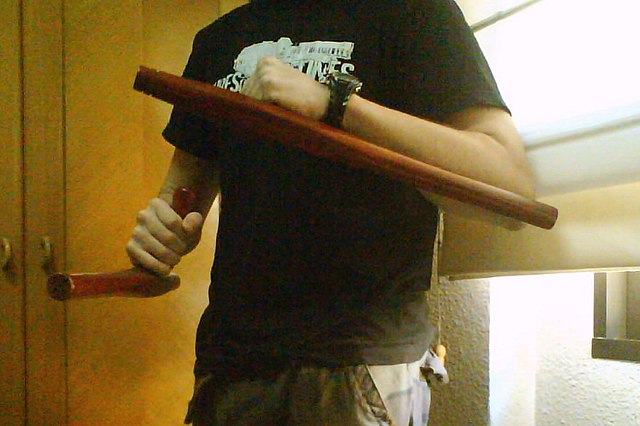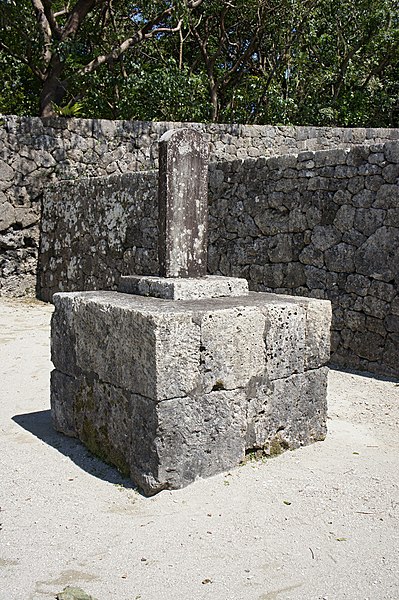The tonfa, also spelled as tongfa or tuifa, also known as T-baton is a melee weapon with its origins in the armed component of Okinawan martial arts. It consists of a stick with a perpendicular handle attached a third of the way down the length of the stick, and is about 15–20 inches (380–510 mm) long. It was traditionally made from red or white oak, and wielded in pairs. The tonfa is believed to have originated in either China, Okinawa or Southeast Asia, where it is used in the respective fighting styles.
A pair of tonfa
A pair of tonfa with a rounded body throughout.
Martial artists of the Khmer Empire wield arm shields at the forearm similar to tonfa in this bas-relief at Cambodia's 12th/13th century Bayon temple
A pair of Cambodian "tonfa" or staupe which is an arm shield with a pointed edge
The Okinawan language or Central Okinawan is a Northern Ryukyuan language spoken primarily in the southern half of the island of Okinawa, as well as in the surrounding islands of Kerama, Kumejima, Tonaki, Aguni and a number of smaller peripheral islands. Central Okinawan distinguishes itself from the speech of Northern Okinawa, which is classified independently as the Kunigami language. Both languages are listed by UNESCO as endangered.
Sign in Okinawa Uno (a colonia in Bolivia), in Spanish and Okinawan: the text reads めんそ〜れ オキナワへ, Menso~re Okinawa-e.
The Tamaoton no Hinomon (玉陵の碑文), referred to as the Tamaudun no Hinomon in modern Japanese, is the oldest known inscription of Okinawan using both hiragana and kanji.






